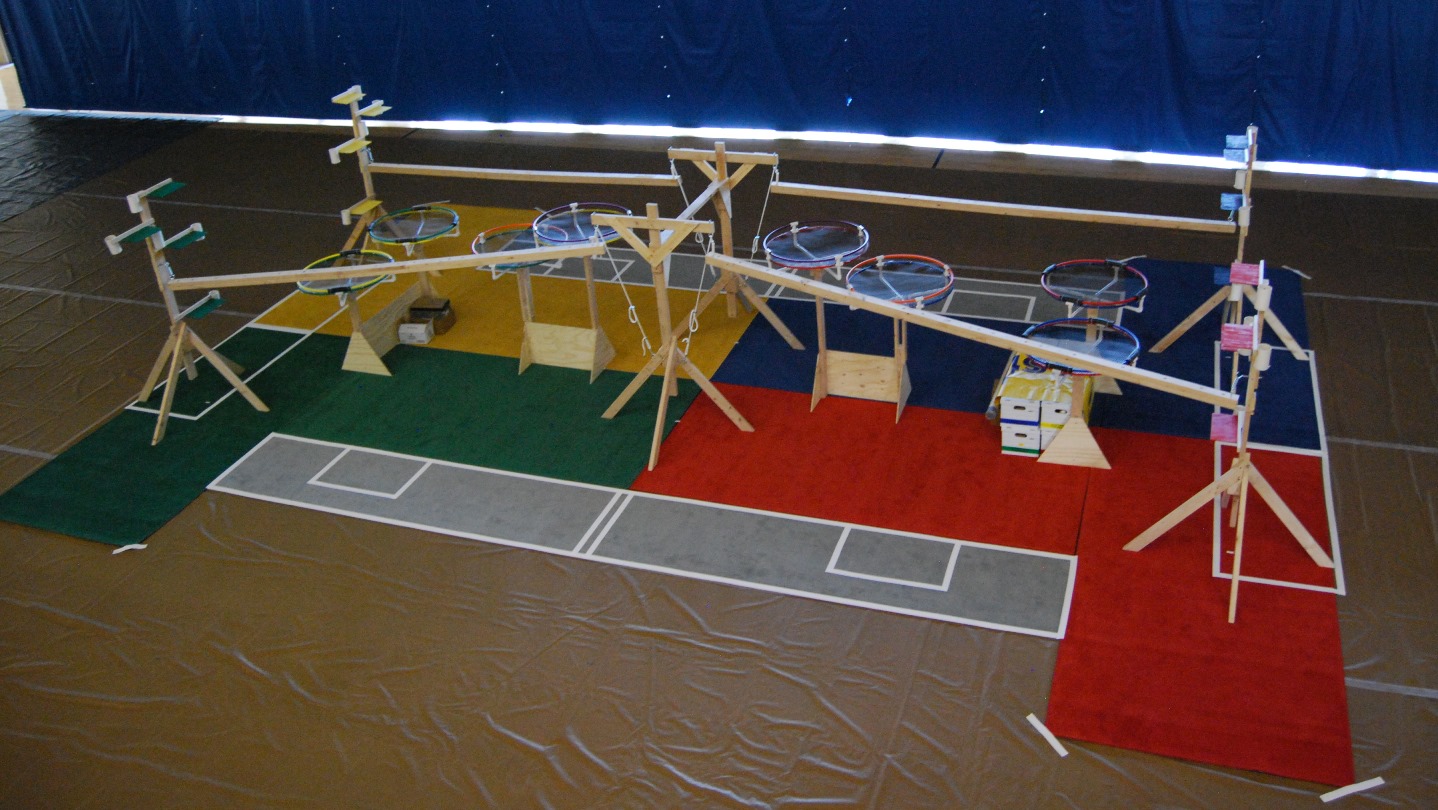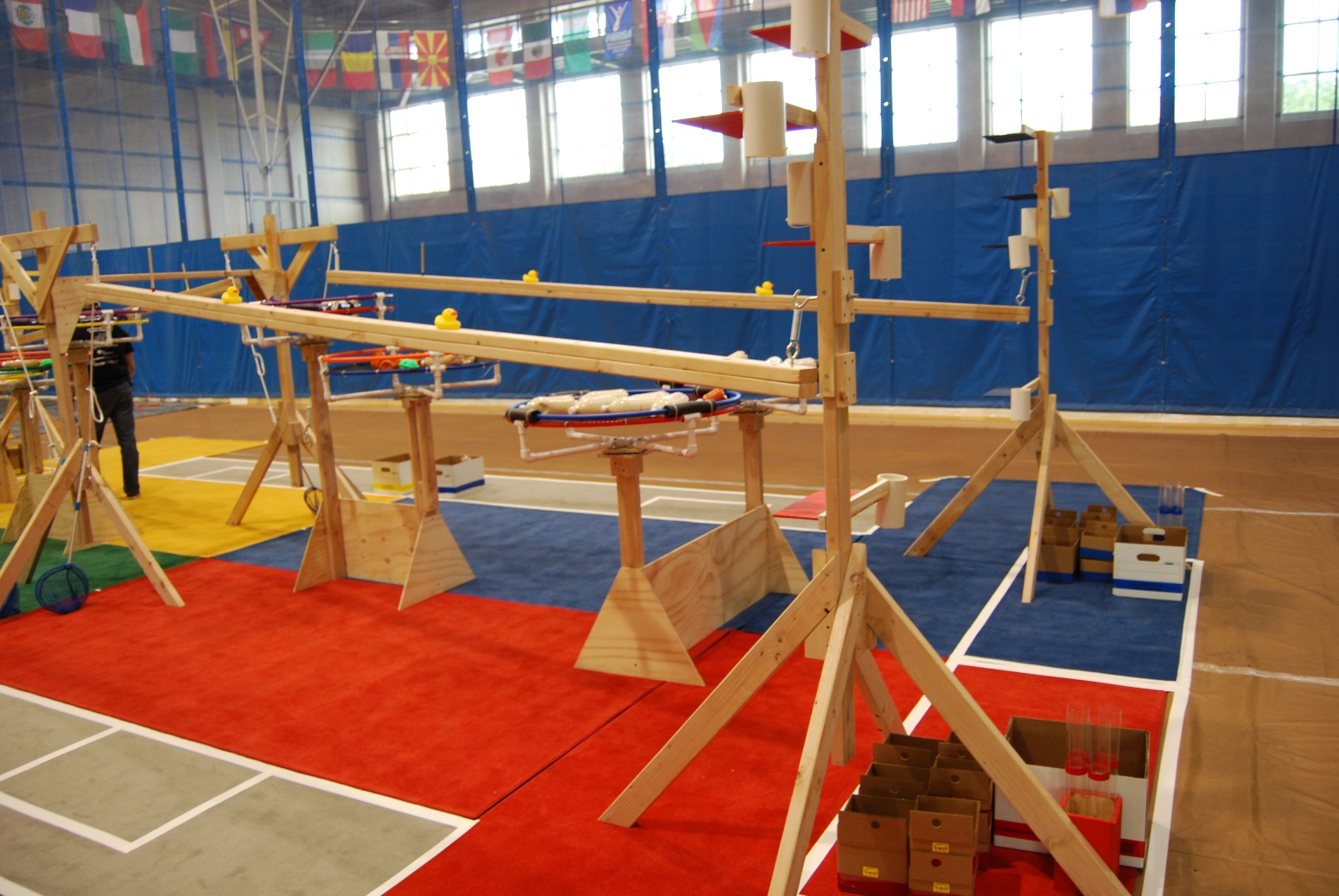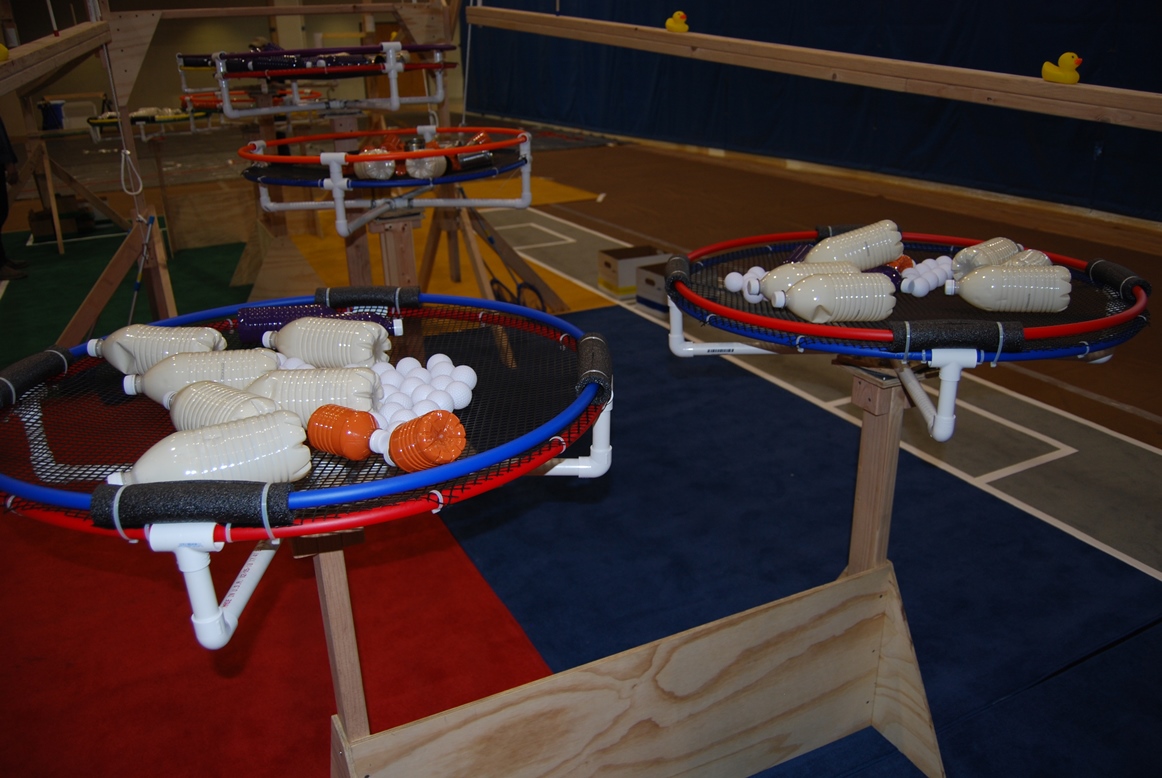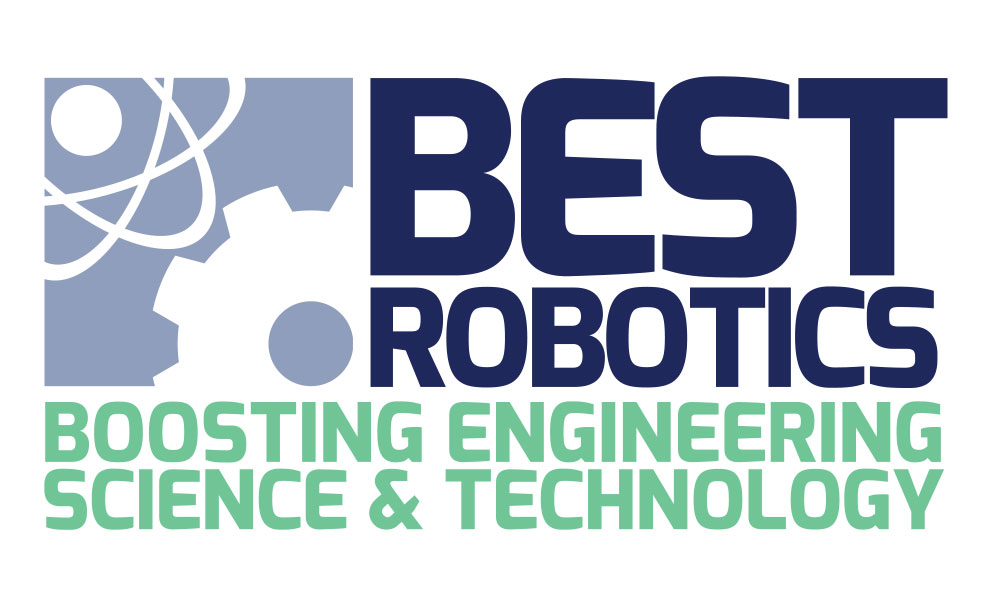Current Events
(Courtesy of SA BEST)
The specific game objectives are to do the following:
- Recover trash from the ocean gyres and recycle it to create artificial reef structures.
- Identify specific trash that is hurting wildlife by examining sea turtles.
- Identify the ocean flow by gathering information provided by rubber duckies.
The playing field includes various elements that represent an ocean environment for the robots to operate within. There are four elevated rails (currents) on which the robots must travel that represent the surface of the ocean. The inclined rails are not rigidly held and can sway and move under the weight of the traveling robot. Rubber duckies are located on the rails at the start of each match. Each half of the field contains four circular platforms that represent the ocean gyres. The gyres are located at various heights relative to the rails, are free to rotate, and contain various types of garbage (plastic bottles, metal cans, and golf balls) and some wildlife (turtles). At the outer end of each rail is a series of shelves that can populated to form a reef structure, and an additional shelf that can be used to transfer items to and from the robot.

Three team members participate during each match. One team member serves as the "Driver" who is the only one who can operate the robot. One team member serves as the "Field Scientist" who is the only one qualified to handle the turtle (inside the turtle is an indication of which type of garbage is doing the most harm to the wildlife during the specific match). The Field Scientist also examines the rubber ducky and can deduce, with information provided by scientists from the other teams, the current pattern that the rubber duckies are indicating.
The final team member serves as the "Field Engineer" and is responsible for receiving garbage captured by the robot and using it to create reef blocks and filament tubes that the robot can then place into the artificial reef structure. A reef block is constructed by placing four of one type of garbage into the correct size box and a filament tube is created by placing eight golf balls into a plastic tube. The Field Engineer can deliver completed blocks and tubes to the robot by placing them on the receiving shelf where the robot can pick up the items.

The table on the page that follows shows where the various game pieces are located at the start of the match, where they must be located to score and their point value. The Field Engineer's recycling box, the Field Scientist's habitat box, and the boxes used to create reef blocks are all considered as boxes for scoring the garbage.
Item/Description |
No. Per |
Point |
Start Location |
Score Location |
10 oz Soup Can |
16 |
10 |
Atlantic (8) Indian (8) |
Boxes |
8 oz Plastic Bottle |
16 |
10 |
Atlantic (12) Pacific (2 ea |
Boxes |
16 oz Plastic Bottle |
16 |
10 |
Indian (12) Pacific (2 ea) |
Boxes |
1 L Plastic Bottle |
16 |
10 |
Atlantic (2) Indian (2) Pacific (6 ea) |
Boxes |
Plastic Golf Ball |
80 |
5 |
Pacific (40 ea) |
Tube |
Sea Turtle |
2 |
10 |
Atlantic (1) Indian (1) |
Habitat Box |
Rubber Ducky |
4 |
10 |
Current (2 ea) |
Boxes |
Recycling of the garbage is performed by placing the items into reef boxes or filament tubes as shown in the table that follows. Points are given for completed blocks and tubes, and the points increase significantly if the block or tube is installed into the reef structure by the robot. Points are cumulative, so when a block or tube is completed, the completion adds to the points that were already scored by retrieving the garbage into the container.
Item |
Number Per Team |
Items to |
Point Value |
|
Completed |
Installed |
|||
6x6x4 Reef Box (Block) |
6 |
One of the |
25 |
100 |
7x7x7 Reef Box (Block) |
3 |
4 ea 1 L bottles |
25 |
100 |
Filament Tube |
4 |
8 ea golf balls |
50 |
100 |
Additional scoring opportunities exist:
- Current Flow Analysis (150 pts): Determine the correct current pattern based on information collected from the duckies in all portions of the field (each has a unique number).
- Sea Turtle Bonus: Doubles points for specific garbage item determined by retrieving info inside sea turtle.
- Flexibility Bonus:
200 pts – two installed reef blocks using different types of garbage.
200 pts – at least one installed reef block and at least one installed filament tube.
400 pts – four completed reef blocks using each type of garbage, and at least one installed filament tube.

There are many additional rules governing the actions of the team members on the field, but a few important restrictions are as follows. During a match, the team members may not:
- Leave their respective areas.
- Touch the field elements or the robot.
- Touch game pieces that have not been delivered by the robot other than items dropped on the ocean floor that can be retrieved by the Field Scientist using the fishing net.
- Pass items from one team member to another.
Teams have constructed their machines subject to a list of allowable materials and other rules on construction, as well as initial size and weight limits. There are also numerous restrictions on how the game is played. A partial list of restrictions includes:
- Robots may touch the gyres and other field elements as needed for executing the objectives but may not use the gyres for support.
- Robots may not attempt to take game pieces that are being grasped by another robot.
- Intentional blocking is not allowed.
- Robots may not remove reef blocks installed by another team.
- Aggressive/malicious actions may result in a penalty or elimination from the match.

 Announcements
Announcements










